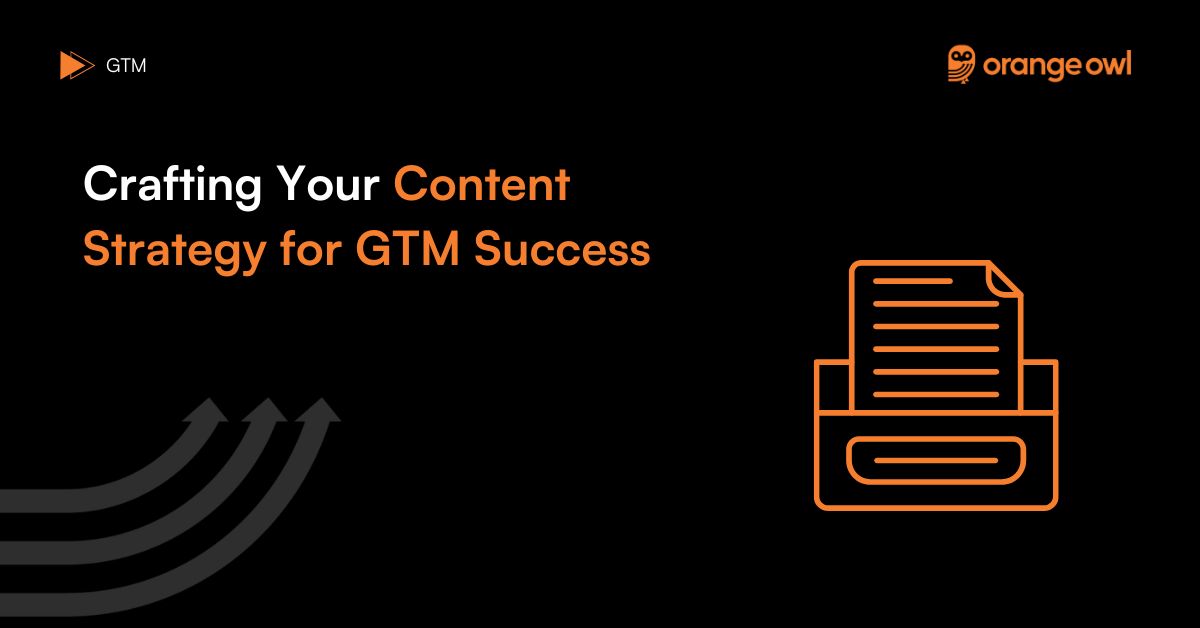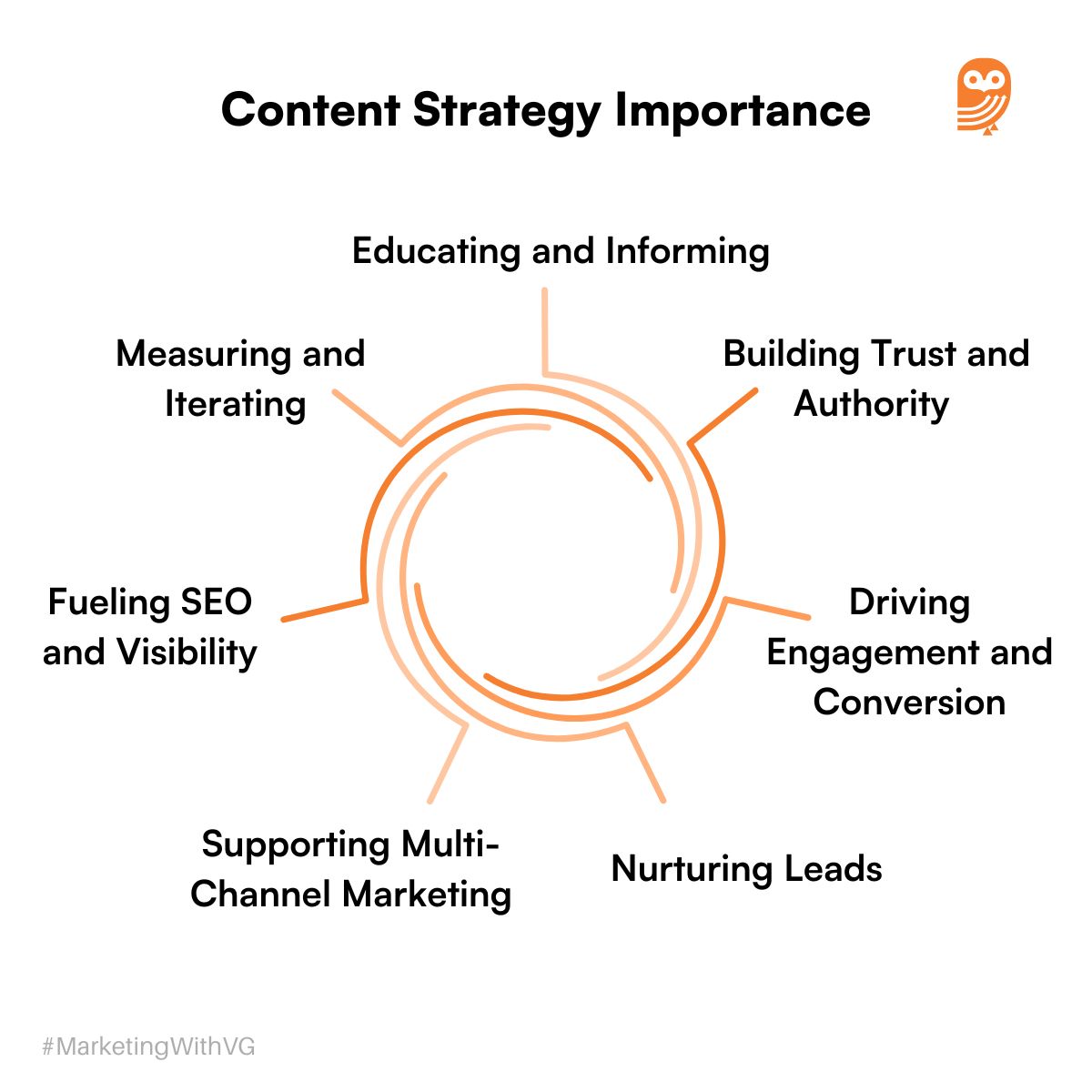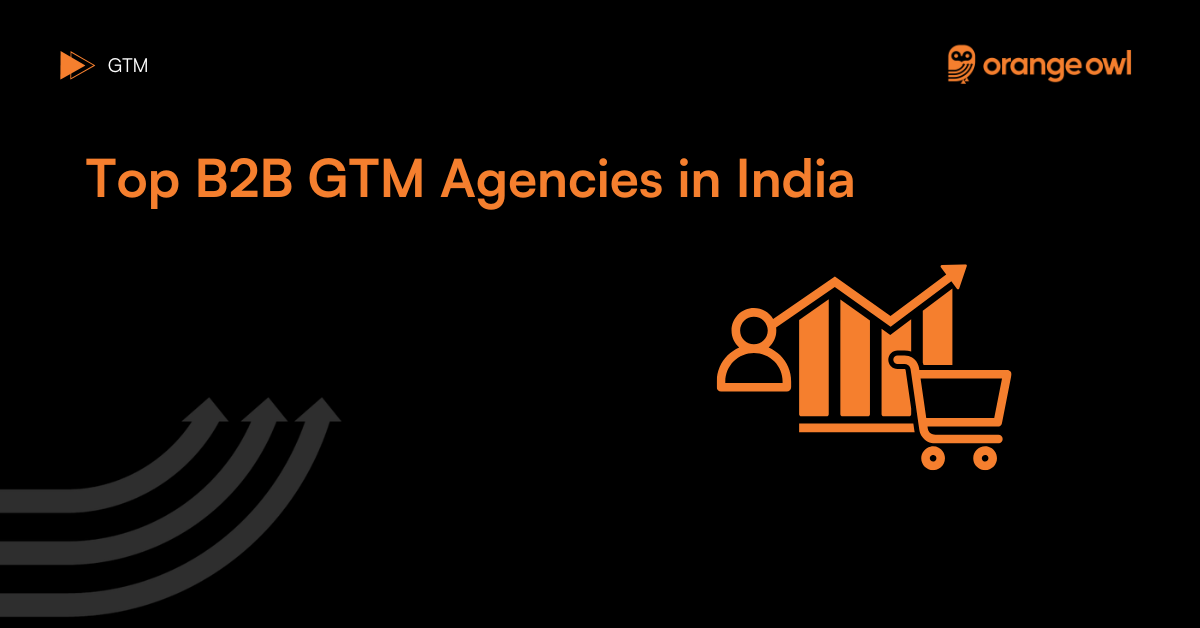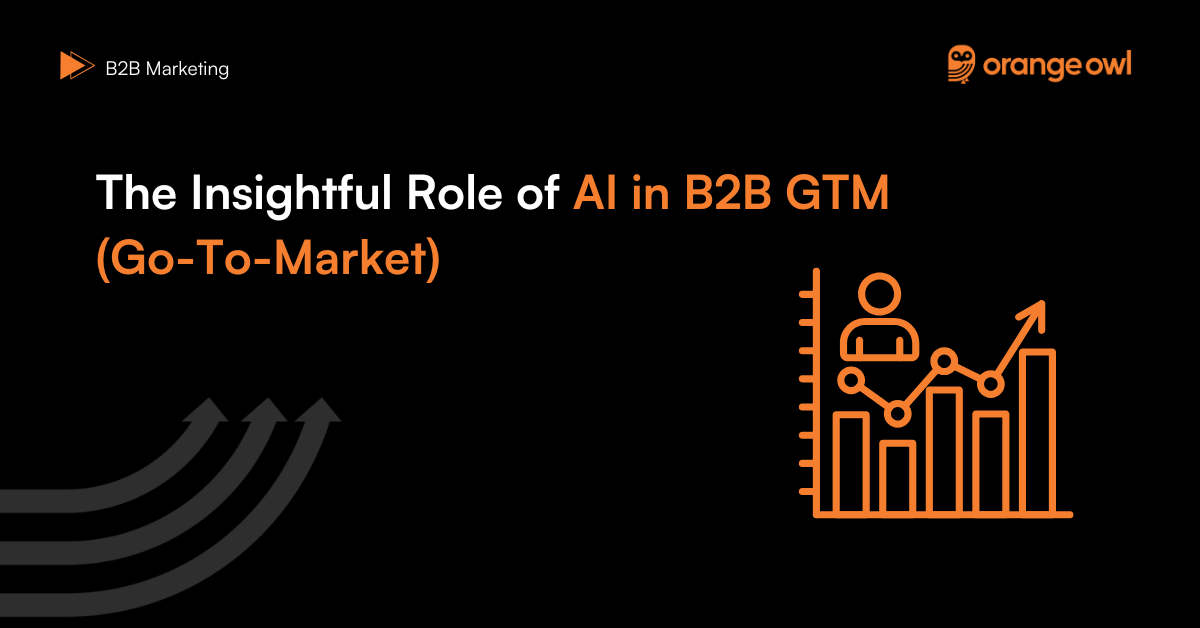Crafting Your Content Strategy for GTM Success
Vivek Goel
June 21, 2025

Table of Contents
Welcome back to our GTM journey, where today, we’re shining a spotlight on the pivotal role of content within your Go-To-Market (GTM) strategy. Content isn’t just about words on a page or pixels on a screen—it’s a strategic asset that fuels your GTM efforts, guiding prospects through the buyer’s journey and building lasting relationships with your audience.
Here’s why a robust content strategy is essential for GTM success:
The Importance of a Robust Content Strategy in GTM Success

Educating and Informing
In the B2B world, informative content like whitepapers and case studies educates decision-makers about complex solutions. Providing actionable insights that demonstrate your understanding of industry challenges and offer practical solutions is key.
Example: A software company can publish a whitepaper detailing how its product helps solve specific industry challenges, complete with real-world case studies.
Building Trust and Authority
Thought leadership articles and industry reports establish credibility and position your brand as a trusted advisor. Hosting webinars featuring industry experts discussing relevant topics can position your brand as an authority in the field.
Example: A cybersecurity firm can host webinars with experts discussing the latest threats and protection strategies, reinforcing their authority in the field.
Driving Engagement and Conversion
Compelling product demos and solution-focused videos capture the attention of potential buyers, guiding them towards conversion. Using storytelling techniques to make technical content more engaging and relatable can be very effective.
Example: A manufacturing company can create a series of videos demonstrating how their machinery solves common production problems, using real customer stories.
Nurturing Leads
Email drip campaigns deliver targeted content tailored to prospects’ interests and pain points, keeping them engaged throughout the buying journey. Offering in-depth product guides and comparison sheets helps prospects make informed decisions.
Example: A CRM provider can send a series of emails detailing different features and benefits of their system, tailored to the recipient’s industry and business size.
Supporting Multi-Channel Marketing
A mix of content formats, including blog posts, infographics, and podcasts, ensures your message reaches prospects across various platforms and touchpoints. Repurposing existing content into different formats maximizes reach and engagement.
Example: A financial services firm can transform a detailed blog post into an infographic, a podcast episode, and a series of social media posts to reach different audience segments.
Fueling SEO and Visibility
Optimized website content and keyword-rich blog posts improve search engine rankings and attract organic traffic. Publishing case studies with detailed descriptions of client challenges and solutions increases visibility for relevant search queries.
Example: An IT service provider can publish blog posts targeting specific keywords related to their services, improving their search engine rankings and driving organic traffic.
Measuring and Iterating
Analytics tools track content performance, providing insights to refine your strategy and deliver more targeted content. Focusing on metrics like time spent on the page and conversion rates helps gauge content effectiveness accurately.
Example: A marketing agency can use analytics to track which blog posts generate the most leads and adjust their content strategy accordingly.
Personalization and Segmentation
Personalized content tailored to specific segments of your audience increases relevance and engagement. By understanding the unique needs and preferences of different buyer personas, you can create content that resonates more deeply with each group.
Example: An e-learning platform can create personalized content for educators, corporate trainers, and students, each segment receiving information most relevant to their needs and challenges.
Interactive Content
Interactive content such as quizzes, assessments, and interactive infographics can engage users more effectively and provide personalized experiences. This type of content not only captures attention but also encourages active participation.
Example: A financial advisory firm can offer an interactive quiz to help potential clients assess their financial health, providing personalized advice based on the results.
Customer-Centric Storytelling
Stories that highlight customer success and real-world applications of your product or service can build emotional connections and demonstrate tangible value. Customer-centric storytelling helps prospects envision how your solution can work for them.
Example: A renewable energy company can share stories of businesses that have significantly reduced their carbon footprint and energy costs by using their solutions.
Aligning Content with the Buying Journey
When crafting your content strategy for GTM, remember to align your content with your target audience’s needs, preferences, and buying journey. Tailor your messaging to resonate with each stage of the funnel, from awareness to consideration to decision-making.
Awareness Stage: Focus on creating content that addresses common pain points and educates prospects about potential solutions. Blog posts, social media content, and introductory videos work well here.
Consideration Stage: Provide in-depth information that helps prospects evaluate their options. Whitepapers, case studies, webinars, and detailed guides are effective.
Decision Stage: Offer content that helps prospects make the final decision, such as product demos, detailed comparisons, and customer testimonials.
Conclusion
Incorporating a robust content strategy into your GTM plan is essential for maximizing reach, targeting the right audience, and driving data-informed decisions. By leveraging the power of well-crafted content, you can enhance your brand’s presence, generate quality leads, optimize conversions, and engage with customers effectively. An integrated approach that combines diverse content formats and channels often yields the best results, providing a comprehensive strategy that drives success in the competitive market landscape. Embrace the power of content and let it propel your GTM strategy to new heights.

Frequently Asked Questions (FAQs)
Content plays a crucial role in GTM by educating prospects, building trust, driving engagement, nurturing leads, supporting multi-channel marketing, fueling SEO, and aligning with the buyer’s journey.
Compelling product demos and solution-focused videos capture the attention of potential buyers, showcase the value of your offerings, and guide prospects towards conversion by demonstrating real-world applications.
Email drip campaigns deliver targeted content tailored to prospects’ interests and pain points, keeping them engaged and informed as they progress through the buying journey, ultimately increasing conversion rates.
Multi-channel marketing ensures that your message reaches prospects across various platforms and touchpoints, utilizing content formats such as blog posts, infographics, podcasts, videos, and social media posts to maximize reach and engagement.
Optimized website content and keyword-rich blog posts improve search engine rankings, attract organic traffic, and increase visibility for relevant search queries, thus enhancing brand visibility and driving more qualified leads.
Key metrics for measuring content performance include time spent on a page, conversion rates, lead generation, customer engagement, ROI, and customer feedback, providing insights to refine content strategies and deliver more targeted content.
Personalized content tailored to specific segments of your audience increases relevance and engagement, allowing you to create content that resonates more deeply with each group and drives higher conversion rates.
Content should be tailored to resonate with each stage of the funnel: Awareness, Consideration, and Decision. Content formats and messaging should address common pain points, provide in-depth information, and offer solutions to help prospects evaluate their options and make informed decisions.



